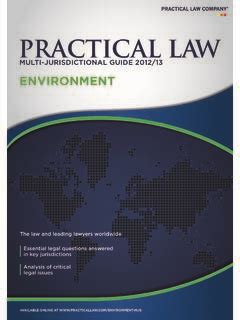Environmental law is a vital field that governs the interaction between humans and the natural environment, aiming to protect ecosystems, public health, and biodiversity. It encompasses a wide range of regulations, treaties, and statutes designed to address issues such as pollution, natural resource management, and climate change. From its historical roots to modern developments, environmental law plays a crucial role in safeguarding the planet. This article provides an overview of environmental law, tracing its history, key principles, and major legislation, while also exploring its enforcement mechanisms and the challenges it faces in the future.
alijyun.com invites you to delve into this topic thoroughly.
1. Definition of Environmental Law
Environmental law encompasses a comprehensive set of rules, regulations, agreements, and common law principles that guide human interactions with the environment. Its fundamental objective is to safeguard the natural world, encompassing air, water, land, and wildlife, by regulating human activities that pose a threat to ecosystems. Environmental law establishes standards and limitations for pollution, resource extraction, and land use, thereby promoting sustainable practices and minimizing environmental degradation.
This legal framework encompasses both national and international laws, addressing a wide range of environmental concerns including climate change, deforestation, and pollution control. It extends to various areas, such as water law, air quality standards, waste management, and biodiversity protection. Moreover, environmental law frequently mandates businesses, governments, and individuals to conduct Environmental Impact Assessments (EIAs) prior to initiating projects that could potentially harm ecosystems.
Environmental law is instrumental in safeguarding our planet. By enacting legal protections for natural resources and imposing penalties for violations, it helps preserve habitats and minimize the detrimental impacts of industrialization and urban development. With global environmental challenges mounting, the significance of environmental law is ever-increasing. It provides a critical framework for addressing urgent ecological and sustainability issues on a worldwide scale.

2. History and Development of Environmental Law
The roots of environmental law lie in ancient regulations governing public health and resource management. However, it was in the 20th century, fueled by the escalating environmental impact of industrialization and urbanization, that the field truly gained momentum. Early environmental laws primarily addressed issues like air and water pollution, with the United States taking a leading role through landmark legislation such as the Clean Air Act (1963) and the National Environmental Policy Act (1970).
The 1972 Stockholm Conference served as a pivotal moment on the global stage, elevating environmental issues to a matter of international concern. This landmark conference paved the way for the creation of crucial international agreements, such as the Paris Agreement and the Kyoto Protocol. These agreements are designed to tackle critical global challenges, including climate change and the decline of biodiversity.
Environmental law has grown significantly over time, encompassing a wider range of issues like habitat preservation, sustainable practices, and mitigating climate change. The evolution of environmental law is ongoing, driven by the increasing environmental challenges we face. This evolution promotes greater international collaboration and stricter regulations to protect our planet.

3. Importance of Environmental Law
Environmental law is essential for safeguarding ecosystems, human well-being, and the Earth’s natural resources. It provides a legal foundation to regulate human actions that could harm the environment, promoting sustainable development and responsible resource utilization. By setting standards for pollution control, conservation, and land management, environmental law prevents environmental damage that could irreversibly harm air, water, and soil quality.
Environmental law serves a multifaceted purpose beyond simply protecting natural habitats. It plays a crucial role in safeguarding public health by limiting exposure to harmful pollutants, ensuring access to clean air and water, and promoting the safe disposal of waste. Furthermore, environmental law contributes to addressing global challenges like climate change by enforcing policies that reduce greenhouse gas emissions and encourage the utilization of renewable energy.
Furthermore, it promotes global collaboration by establishing agreements that address transnational environmental challenges such as ocean preservation and biodiversity decline. Through holding individuals, businesses, and governments accountable for their environmental footprint, environmental law plays a critical role in securing a healthier and more sustainable future for present and future generations.

4. Key Principles of Environmental Law
Environmental law rests on a foundation of several key principles that govern its implementation and enforcement. One central principle is the Precautionary Principle. This principle advises that when scientific uncertainty exists, actions should be taken to prevent environmental damage before it occurs. This principle encourages regulatory bodies to prioritize environmental protection, even when the potential risks are not completely understood.
The Polluter Pays Principle is another crucial concept, emphasizing that those responsible for environmental harm should shoulder the costs of rectifying it. This principle ensures financial accountability for businesses and individuals responsible for pollution or environmental degradation, compelling them to fund cleanup and restoration efforts.
The Sustainable Development Principle underscores the importance of harmonizing economic progress with environmental preservation. This entails ensuring that present generations satisfy their requirements without jeopardizing the capacity of future generations to meet theirs. This principle is paramount in formulating policies that cultivate long-term environmental sustainability.
Finally, the Principle of Environmental Justice guarantees equal treatment and significant participation for all individuals, irrespective of their race, ethnicity, origin, or financial status, in the creation, execution, and enforcement of environmental regulations and policies. This principle tackles disparities and strives to safeguard susceptible communities from disproportionate environmental hazards and damages. Collectively, these principles constitute the bedrock of contemporary environmental legislation.
5. Major Environmental Legislation
Environmental protection and sustainable practices are significantly advanced by major legislation around the globe. In the United States, two prominent examples are the Clean Air Act (1970) and the Clean Water Act (1972). The Clean Air Act governs air pollution, setting emission standards to safeguard public health and the environment. The Clean Water Act focuses on reducing water pollution and ensuring safe water quality for human use and ecological well-being.
The Paris Agreement, a landmark treaty adopted in 2015, unites nations in their efforts to combat climate change. This agreement aims to reduce greenhouse gas emissions and promote sustainable development. The Kyoto Protocol, an earlier international agreement from 1997, also addressed global warming by focusing on limiting carbon emissions.
The Endangered Species Act (1973) in the United States aims to safeguard critically endangered species and their habitats. Meanwhile, the European Union’s REACH regulation (2006) focuses on the safe use of chemicals to minimize risks to both the environment and human health.
These pieces of legislation, among others, constitute the legal foundation for environmental protection. They tackle crucial issues such as pollution, biodiversity loss, and climate change, while simultaneously promoting the global enforcement of environmental law principles.
6. Enforcement of Environmental Law
Protecting the environment relies heavily on the enforcement of environmental laws. Governments, regulatory agencies, and international organizations all contribute to the implementation and enforcement of these regulations. In many nations, specific agencies, such as the Environmental Protection Agency (EPA) in the United States, are tasked with overseeing compliance, performing inspections, and addressing violations.
To ensure compliance with environmental laws, various enforcement mechanisms are employed. These can involve fines, sanctions, and legal actions taken against individuals, businesses, or even governments that violate regulations. For example, companies engaging in illegal pollution or improper hazardous waste disposal may face substantial penalties or be mandated to rectify the environmental damage they caused. In extreme cases, violators may be subject to criminal charges, potentially resulting in imprisonment or more severe consequences.
Global environmental enforcement depends on collaboration among nations and their commitment to international agreements like the Paris Agreement and the Convention on Biological Diversity. These agreements typically incorporate reporting systems, enabling the monitoring and accountability of countries for their environmental pledges.
Public participation is a crucial aspect of environmental law enforcement. Citizen lawsuits, for example, empower individuals or groups to pursue legal action against entities violating environmental regulations. This grassroots involvement strengthens accountability by guaranteeing compliance with environmental laws and addressing violations. By doing so, it safeguards ecosystems and public health.
7. Challenges and Future of Environmental Law
Environmental law faces significant challenges as it navigates the changing landscape of environmental issues and the interconnectedness of a globalized world. One major hurdle is enforcement, especially in developing regions, where limited resources and infrastructure can hinder effective implementation. Ensuring compliance with environmental regulations is a complex task, and disparities in enforcement capabilities can result in uneven environmental protection across different areas.
Emerging environmental threats, such as climate change and biodiversity loss, present another significant challenge. The pace of scientific advancements and new environmental data often outstrips the development of laws and regulations, hindering effective action in addressing these critical issues.
Global cooperation faces challenges, as international agreements necessitate coordination among countries with varied priorities and commitment levels. Balancing economic development with environmental protection presents a contentious issue, with certain nations prioritizing economic growth over strict environmental regulations.
Moving forward, environmental law must embrace innovation to thrive. This includes incorporating new technologies for monitoring and enforcement, designing adaptable regulations to address evolving circumstances, and fostering international collaboration to address global environmental challenges. Prioritizing sustainable development and equitable solutions will contribute to a more robust and effective system for safeguarding our environment.
In conclusion, environmental law is essential for safeguarding our planet and ensuring sustainable development. By regulating human impact on the environment, enforcing compliance, and adapting to emerging challenges, environmental laws help protect ecosystems, public health, and natural resources. As global environmental issues evolve, the continuous advancement and enforcement of these laws will be critical in addressing both current and future environmental concerns effectively.
alijyun.com

